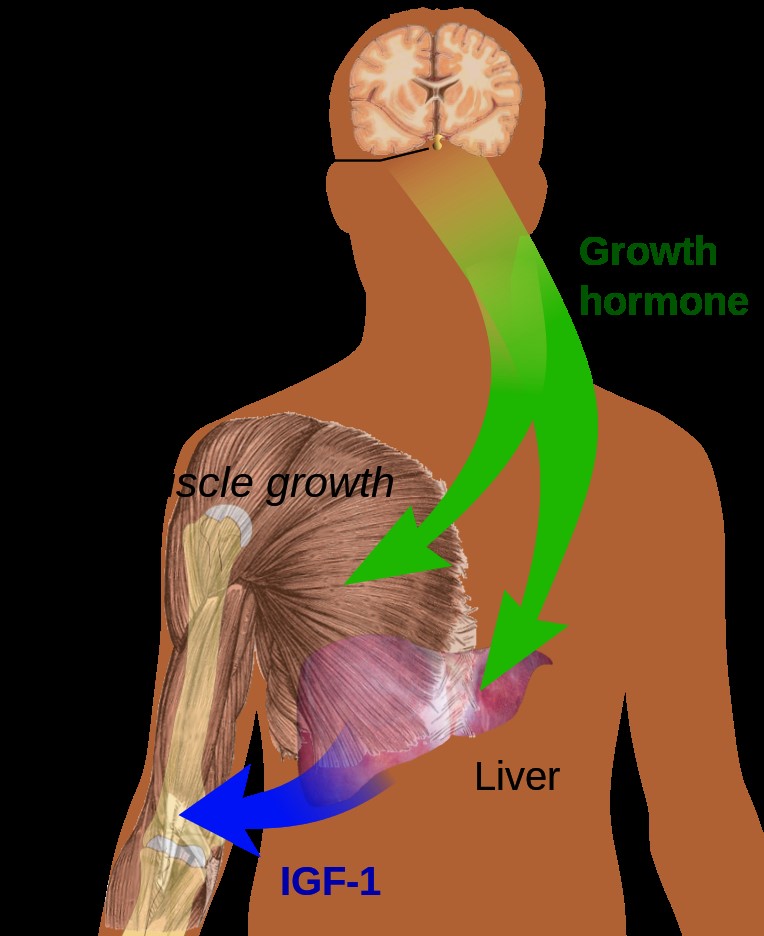
GROWTH HORMONE AND DISORDERS
Introduction
Human growth hormone (HGH), also known as somatotropin, is a peptide hormone secreted by the anterior pituitary gland.HGH is an anabolic hormone that builds and repairs tissue such as collagen and muscle tissue throughout the body. HGH release is stimulated from the release of growth hormone releasing hormone (GHRH), which is released as a result of exercise. HGH promotes the release of Insulin-like growth factor 1 (IGF-1), which promotes anabolic effects within the body. It also helps facilitate the body's response to exercise. However, it's effects are not restricted to protein alone. HGH is only released periodically, such as during certain stages of sleep, certain parts of the day, and with exercise.The periodic release of HGH combined with its positive anabolic and metabolic effects on the body has led to supplementation of HGH to improve exercise performance.
Mechanism of action of GH
Growth hormone activates the Janus kinase (JAK)–signal transducer and activator of transcription (STAT) signaling pathway, and recent studies have provided a new understanding of the mechanism of JAK2 activation by growth hormone binding to its receptor. JAK2 activation is required for growth hormone-mediated activation of STAT1, STAT3, and STAT5, and the negative regulation of JAK–STAT signaling comprises an important step in the control of this signaling pathway. The GHR also activates the Src family kinase signaling pathway independent of JAK2. This review covers the molecular mechanisms of GHR activation and signal transduction as well as the physiological consequences of growth hormone signaling.
Disorders
GH deficiency causes short stature in children i.e; dwarfism
In adults, GH deficiency results in a reduction in muscle mass, an increase in body fat (particularly abdominal fat), a decrease in bone mineral density and increased fatigue.
Acromegaly is a hormonal disorder that results from excess growth hormone secretion. It most commonly affects middle-aged adults and can result in serious illness and premature death.
The name acromegaly comes from the Greek words for "extremities" and "enlargement" and reflects one of its most common symptoms, the abnormal growth of the hands and feet. Soft tissue swelling of the hands and feet is often an early feature, with patients noticing a change in ring or shoe size. Gradually, bony changes alter the patient's facial features: the brow and lower jaw protrude, the nasal bone enlarges, and spacing of the teeth increases. Some patients also notice excessive sweating, skin tags, hoarseness, enlargement of the tongue, snoring and sleep apnea, and carpal tunnel syndrome.
Gigantism is a rare condition that causes abnormal growth in children. It occurs due to excess GH secretion during growing years of a child.
By the end of this lesson, students should know about
- Physiological functions of growth hormone
- Regulation of growth hormone secretion
- Mechanism of action of growth hormone
- Abnormalities of growth hormone secretion
- Difference between acromegaly and gigantism


